
Laem Phra Nang, the peninsula jutting out from the south coast of Thailand into the Andaman Sea, is better known simply as Railay. Offering a huge number of bolted sport routes, it's a deservedly world famous climbing arena. Steep lines on vertical limestone afford stunning views over palm trees and sparkling azure waters. The rock itself often seems purpose built for climbing. Lines top out into surreal aerial caves, and stalactites stretch down from precipitous overhangs. Wall-to-wall sunshine and an abundance of restaurants and bars make for a relaxed and friendly atmosphere.
What's there?
Laem Phra Nang has three main climbing areas; the village of Ton Sai to the north west, and West Railay and East Railay which flank the peninsula itself. Laem Phra Nang beach at the southern end of the peninsula is also considered as a separate sector in some guidebooks. Ton Sai is the the base of choice for most climbers, with its laid-back vibe, cheap accommodation and some nice bars to kick back in after a day on the rock. It can be hard to remember that Laem Phra Nang is a peninsula and not an island, because it's inaccessible by land and the only way to get there is by longtail boat.
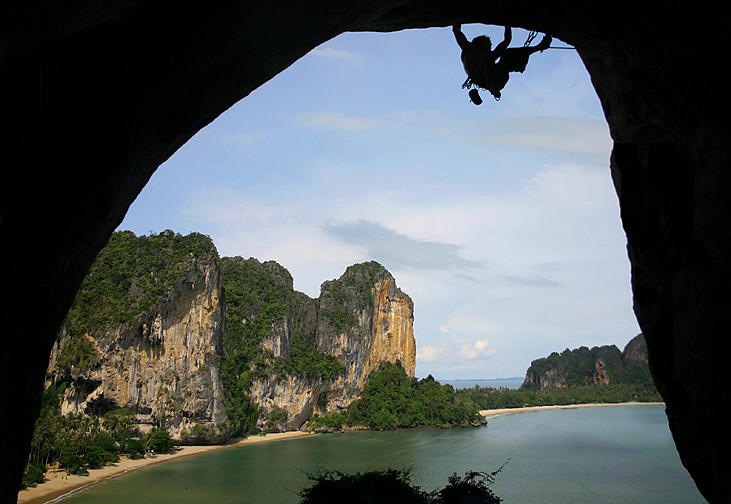
Between them, the three areas have some 49 walls (not including the islands off the coast) and more than 700 routes. Highlights The grades at Laem Phra Nang are mostly at the higher end of the scale. The easy-to-access Ton Sai Beach wall, for example, is home to some seriously steep and strenuous but generally short lines. And if you're really feeling adventurous, Dum's Kitchen wall is home to Greed (8c), officially Thailand's hardest sport route. Multi-pitches are in abundance too, with the 4-7 pitch Humanality (6b+ crux) and its superb aspect one of the best known.
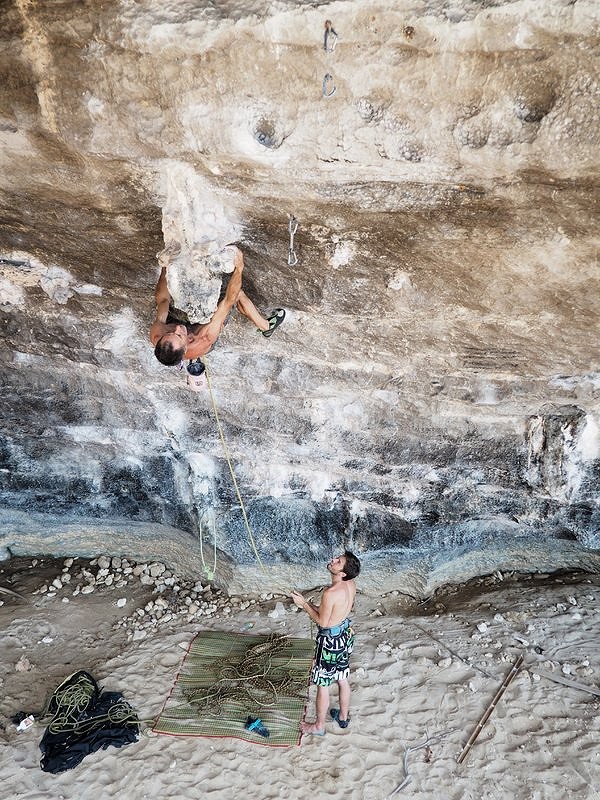
Thaiwand Wall, the unmissable spire of rock at the end of the peninsula, is also well worth a visit. Normally accessed from West Railay beach, it stands 200m high but enjoys shade for much of the day thanks to a northerly aspect. It boasts 21 routes over a broad range of grades, including seven multi-pitch routes. The five-pitch Lord of the Thais offers a wildly exposed 7b crux, though many climbers find the first pitch alone (6a+) a nice distraction from gravity. Other multi-star multi-pitches include Circus Oz (7a crux pitch) and Equatorial (7b crux).
Though the majority of routes are 6c or higher, Laem Phra Nang easily has enough sub-6c routes to justify a visit for lower grade climbers, though it's not the best destination if you have young children and want to find them something basic to climb. One Two Three Wall on East Railay is the most popular crag for easier lines, but can get crowded with backpackers trying out supervised climbing for the day. Other good lower grade options include Fire Wall and Wee's Present Wall. The former is home to The Groove Tube (6a) a comfortable but enjoyable 3-star line to the top of a smooth chimney.
Beta
The quality of the limestone is excellent for the most part, though a few areas have rotten rock and loose stalactites (!) so should definitely be avoided. Holds can be polished, especially on the more popular routes. The fierce heat means that most climbers chase the shade, starting on a west-facing crag in the morning and moving to an east-facing area in the afternoon. The sweltering midday temperatures make long lunches justifiably popular! Another consideration is the tide. At high tide, the walk from Ton Sai to West Railay means that a ten minute detour over a rocky headland is needed. Some walls can only be reached on foot at low tide, but it's often possible to hire a boat to otherwise inaccessible crags like Eagle Wall.
The combination of tropical conditions, a salty coastal location and high levels of groundwater acidity mean that stainless steel bolts have a tough and seriously short lifespan in the Thai limestone; 'new' bolts rusting to breaking point after just nine months are common. For this reason, glued titanium bolts are the norm (see http://thaitaniumproject.com) and up-to-date guidebooks make it very clear when lines are not safely or recently bolted. Rope slings are common, but usually give way to bolts on crux moves and higher graded climbs.
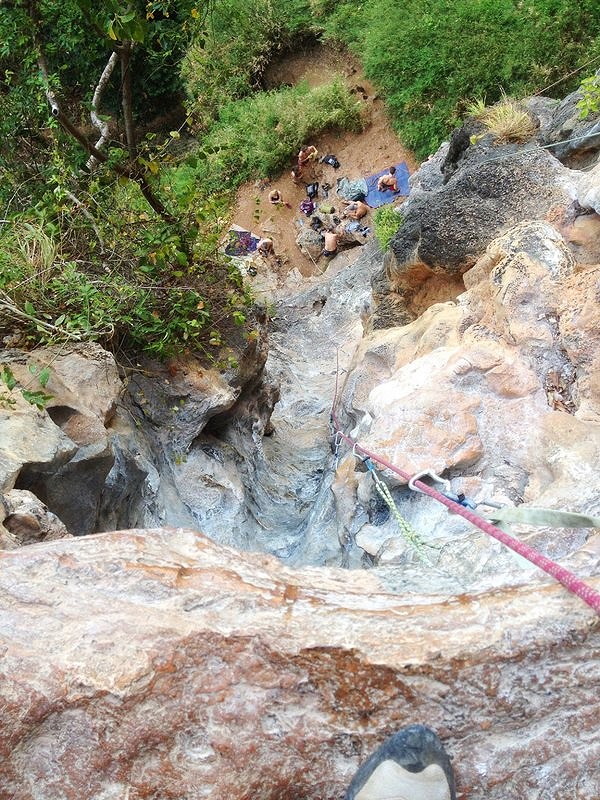
Logistics
When to go
The best time to visit is from November to March, during the dry season.
How to get there
Krabi is the nearest major town and airport, with flights and buses from Bangkok and some flights from international airports. Laem Phra Nang can only be accessed by boat, either from Krabi or the much closer town of Ao Nang (100 Baht, or about £2, one-way). Note that there are no ATMs in Ton Sai, so if you need more cash you'll have to head across to Railay.
Accommodation Advertise here
No Premier Listings found in this area
Laem Phra Nang offers a good choice of accommodation. In Ton Sai, bamboo or brick bungalows with double beds are the norm. At the budget end of the scale, bungalows in Ton Sai can be found for as little as 400 Baht (about £8) per night. Staying in West or East Railay provides a lot more comfort, but at a price – expect to pay from about £30 per night for a typical double/twin room.
Gear
There are three shops in Ton Sai which hire out full sets of gear; the popular Base Camp Tonsai, the slightly more expensive Rock Shop near Ton Sai beach, and the newer Shadow Rock. King Climbers, based in Ao Nang, is also well established. Prices between shops vary but expect to pay around 1300 Baht (£25) for a full days' kit hire for two climbers, including rope. As always, inspect all gear carefully before use and hire at your own risk.
Outdoor Shops Advertise here
No Premier Listings found in this area
Guidebooks
Rock Climbing in Thailand and Laos by Elke Schmitz, widely sold in Ton Sai, was updated in 2014 (7th Edition). The latest 8th Edition of King Climbers Thailand Route Guide Book covers 2013-2014. Both are excellent guidebooks for the area.
Instructor/Guides Advertise here
No Premier Listings found in this area

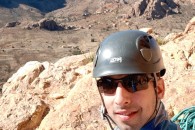






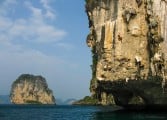
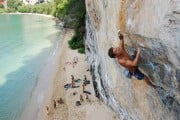

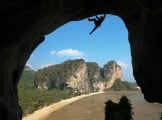


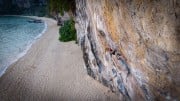
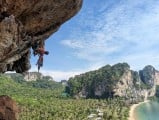









Comments